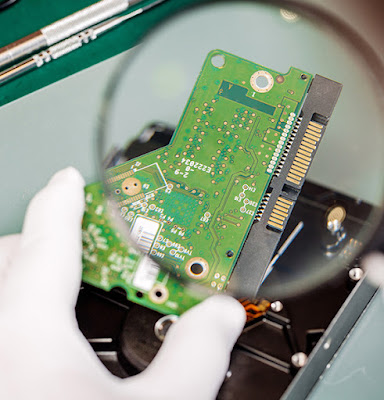Manufacturers of consumer goods are always in pursuit of creating and delivering high-quality products to their clientele. Hence, there are...
The Importance of Visual Inspection in Supply Chain.

The Importance of Visual Inspection in Supply Chain.
Manufacturers of consumer goods are always in pursuit of creating and delivering high-quality products to their clientele. Hence, there are numerous points at which these products are checked for optimal quality, and visual inspection is one of the primary checks performed to ensure everything is of the right shape, color, texture, free from any blemishes, and all components assembled in the exact location where they’re needed. However, visually inspecting each and every product can be heavily time-consuming and can impact the manufacturing and assembly units’ productivity if not automated with advanced and sensitive visual inspection equipment.
Apart from automated visual inspection, the vitality of inbound quality inspection can also not be negated. Quality reigns supreme in the supply chain industry. Hence quality should be inspected from the point of manufacturing to assembling and when the supplier delivers. Here’s a breakdown of how and when:
1. The buying department negotiates the grounds of quality inspection with the supplier at the time of delivery. The quality department then provides the supplier with the quality specifications that the products must meet in order to pass the quality check. Next, when the items are delivered from the supplier to the manufacturing plant, a surprise inspection can be held to ensure adherence to the agreement. Either way, the supplied material will be inspected at one point or the other. Here, the quality department can work with the warehouse staff to establish a protocol for the main visual inspection components so as to avoid missing a fault.
2. All items received at the entry dock should be visually inspected for defects and clear problems with the products. Here, any dents, leaks, cracks, broken packaging, etc., can be a red flag and fair ground to refuse to unload, reject and return the item promptly.
3. Lastly, all items must go through random sampling, whether by the warehouse staff or the quality department. A sampling at the time of delivery helps streamline the process of visual inspection and gives a fair assessment of the size it is to be selected from. It is important to note that some items, such as chemicals, may require third-party lab testing to determine whether the inbound delivery meets the required specifications.
The Benefits of X-Ray Inspection Equipment in Quality Control.
Assuring product quality is of utmost importance to businesses in today's industrial world. One tool that has gained popularity for qu...

Labels
- Ac-Dc converter
- Advanced IC Sockets
- Buy Military Components
- Buy Passive Components
- Capacitors
- Ceramic capacitor
- Component
- component suppliers
- components distributor
- components suppliers
- Components Visual Inspection
- Counterfeit Electronic
- Counterfeit electronic chips
- counterfeit electronic components
- Counterfeit Electronics Personnel Training
- Counterfeit Mitigation
- counterfeiting
- Distributor
- Electrical Visual Inspections
- electronic
- electronic ceramic components
- Electronic Component
- Electronic Component Distributors
- Electronic Component Distributors Military Electronic Parts Electronic
- Electronic Component Distributors Military Electronic Parts Electronic Components Suppliers Buy Passive Components
- Electronic components
- electronic components brokers
- Electronic Components Counterfeit Mitigation
- electronic components distributor
- electronic components distributor in usa
- Electronic Components Suppliers
- electronic products
- Inspection Equipments
- Integrated Supply chain solutions
- Intervox Speakers
- Inventory
- inventory control
- inventory control and management
- Inventory Management
- Inventory Management Challenges
- Inventory Management Solution
- inventory management solutions
- inventory management system
- IP-66
- M3-17
- Manufacture
- military component
- military component suppliers
- Military Electronic Parts
- obsolete component suppliers
- obsolete components distributor
- Obsolete Electronic Components
- Obsolete Electronic Components Distributor
- Proactive Product Supplier Lifecycle Management
- Resonator Parts
- rohs compliance testing
- RoHS Testing
- RoHS Testing Equipment
- Supply Chain Management
- UNIMAX Switches
- Visual Inspection
- Visual Inspection Components
- visual inspection equipment
- Visual Inspection Equipments
- Visual Inspection System
- x ray inspection equipment
- X-Ray inspection
- X-Ray inspection equipment
- X-Ray Inspection Systems
- X-Ray inspection Testing
- X-Ray Testing & Inspection Equipment
- x-ray-imaging

0 comments: